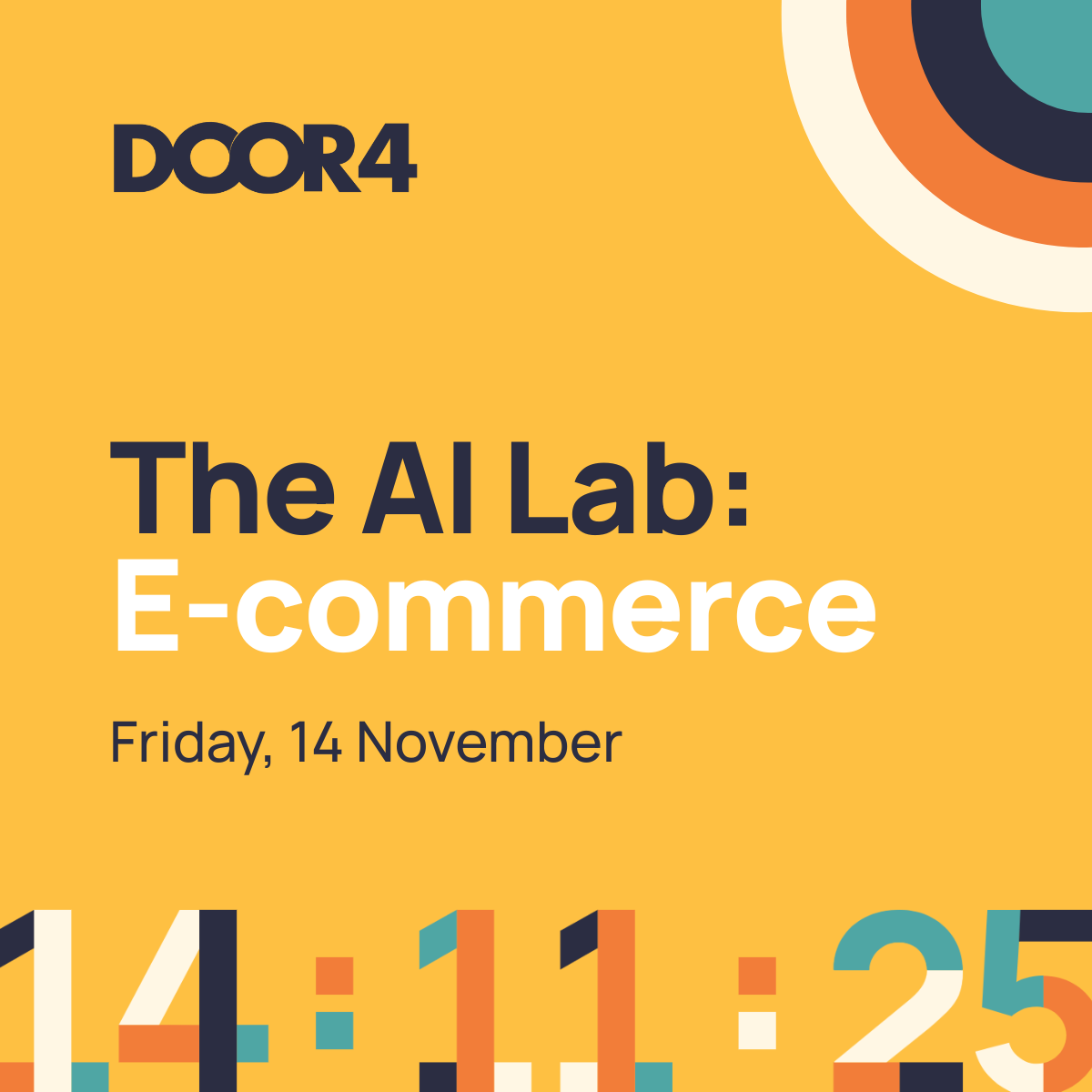Ready to explore the possibilities?
Request a quick call with our team to find out how the Innovation Explorer program can help your business take its next big leap into AI and automation.
 I often spend time thinking about the randomness of life, and the logical need to progress. Science typically, owing to its very nature is about experimenting and proving (disproving) outcomes, so it relies on data and structure to do this. Yet some of the best innovations of leaps forward in our progress come from divine inspiration.
I often spend time thinking about the randomness of life, and the logical need to progress. Science typically, owing to its very nature is about experimenting and proving (disproving) outcomes, so it relies on data and structure to do this. Yet some of the best innovations of leaps forward in our progress come from divine inspiration.
The Spark of Inspiration in a Sea of Iteration
At Door4 we consistently aim to straddle this boundary, I think about us as a melding pot of left and right brain, I fear the world has or at least is becoming strained into one camp or the other. I was asked to write about experimentation, but my mind does not work logically when put to a creative task and therefore have strained my topic (unsure if that’s meta, pretentious or both).
“If I had asked my customers what they wanted, they would have said a faster horse” – Henry Ford
This was a deliberate innovation, it took inspiration and execution to wrap around the concept, with the willingness to take missteps and accept things may not go to plan.
Embracing Experimentation
A similar story can be told for the iPhone, which wasn’t just a product of iterative improvements to their iPod and pre-existing mobile phones but it was the spark of inspiration to put user interface design at the heart of their product. Meanwhile, Microsoft was still trying to iteratively compete with the iPod, inventing the Zune, released 6 months before the first iPhone.
Both these historical examples show the necessity for some inspiration for change in the process, however, as Rory Sutherland often points to “happy accidents” also occur in life. It is random regardless of our methods from time to time, for instance, Viagra was originally developed as a treatment for angina, and found its true calling through an unexpected side effect, reminding us that progress isn’t always linear or predictable.
I love these examples, as they illustrate my point to a tee, experimentation and iteration have to begin with a hypothesis or axis of inspiration. I fear we’ve lost this thinking a little, especially in marketing, so many briefs, especially for a performance marketing agency start with microevolution.
“Can we test slightly more padding on the page?”
Or wholesale upheaval
(I’m bored)… “Can we completely change the ads?”
It starts with strategy and objective, everything else is an action or reaction to these, either through inspiration with the aim in mind or iteration to get us there faster.
The Role of Inspiration in Brand Success
You don’t have to go far in Door4 to find someone that will accuse me of being a spreadsheet junkie, however, it is this tool that I most blame for the lack of progress in businesses. Too often rationality of numbers conflicts with the practicality of life and human behaviour. Looking at a simple cost saving on a spreadsheet is not strategic or aligned to core business objectives, sometimes of course it may be required, but rarely is it that a business reverts to first principles in this instance “what is the business trying to achieve”.
I get it, people want a sure thing, and data can lead to predictable outcomes, so the temptation becomes iterate and optimise what we have.
We often cite Google’s famous experiment of testing 41 shades of blue for their links exemplifies this approach – a methodical, iterative process designed to optimise user experience down to the pixel. However, the genius of Google always existed in their two core original concepts; allowing for a “peer review” system in their algorithm, essentially crowd sourcing the best information and the simple user interface design, it was meant for nothing else but searching.
Again inspiration before iteration.
This tension between art and science is particularly evident in the digital marketing landscape. Around 2013-14, Google introduced concepts like “the messy middle” – the complex space between trigger and purchase where consumers are won and lost. This led to an era of hyper-targeting, with platforms like Google and Meta promoting increasingly granular audience segmentation.
Yet, as Byron Sharp and others have argued, this obsession with targeting might be missing the forest for the trees. Sharp’s research suggests that aggressive reach strategies often outperform over-targeted “programmatic” approaches. The art of brand building, it seems, can’t be reduced to mere data points.
Targeting has a place, but optimise too much and you’ll optimise out the volume you need to keep the business powering on.
The truth is, neither approach – pure art nor pure science – is sufficient on its own. Real progress requires both…
Look at Paintnuts, a brand we helped to launch, through the client’s inspiration to try a new product line of which they had knowledge, and our approach to methodical testing has taken them from nowhere to roughly 20% of the market.
On that note, it feels fitting to end on the Arthur Conan Doyle quote,
“While the individual man is an insoluble puzzle, in the aggregate he becomes a mathematical certainty. You can, for example, never foretell what any one man will be up to, but you can say with precision what an average number will be up to. Individuals vary, but percentages remain constant. So says the statistician.”
The history of human progress is neither a straight line nor a random walk. It’s a dance between the known and the unknown, between the measurable and the imaginable. As marketers, our role is to master this dance, to know when to follow the data and when to take a leap of faith.
Author: Sean Dwyer
-
 14.11.2023|How can niche specialism differentiate your business in an ever-evolving market? Can being versatile dilute your expertise? Leon Calverley, founder of Door4, drives this point home with his insights and how Door4 has evolved in recent years.
14.11.2023|How can niche specialism differentiate your business in an ever-evolving market? Can being versatile dilute your expertise? Leon Calverley, founder of Door4, drives this point home with his insights and how Door4 has evolved in recent years. -
 10.09.2024|A dual-lens marketing approach that balances future and current demand is key. We focus on becoming "famous" while optimising every stage of the buyer journey.
10.09.2024|A dual-lens marketing approach that balances future and current demand is key. We focus on becoming "famous" while optimising every stage of the buyer journey. -
 05.05.2019|I owe everything I know about Paid Search to my mistakes and learning from them. My brightest light bulb moment showed the junior executive version of me that I’d been getting it wrong.
05.05.2019|I owe everything I know about Paid Search to my mistakes and learning from them. My brightest light bulb moment showed the junior executive version of me that I’d been getting it wrong.
Door4 opinions and insight.
We have a lot to talk about.Our latest articles, features and ramblings.
We explore performance marketing, AI, communications and optimisation.












